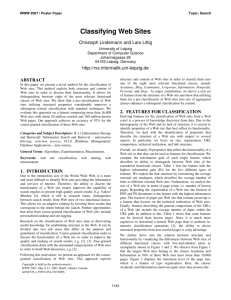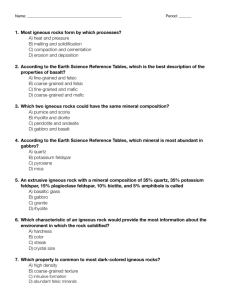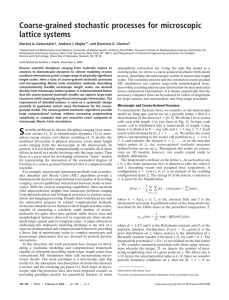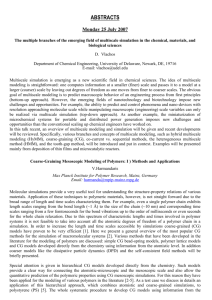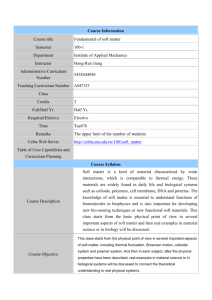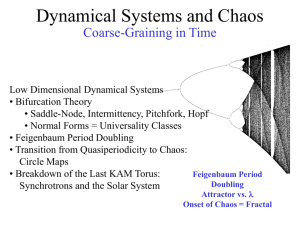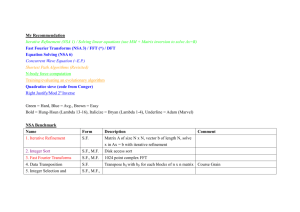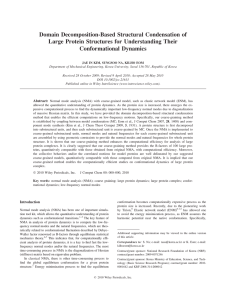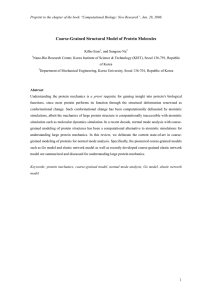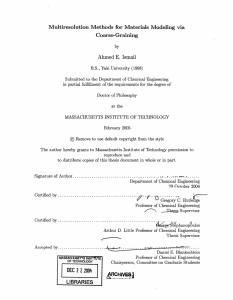Coarse Graining, Fall 2013 Final Assignment
advertisement
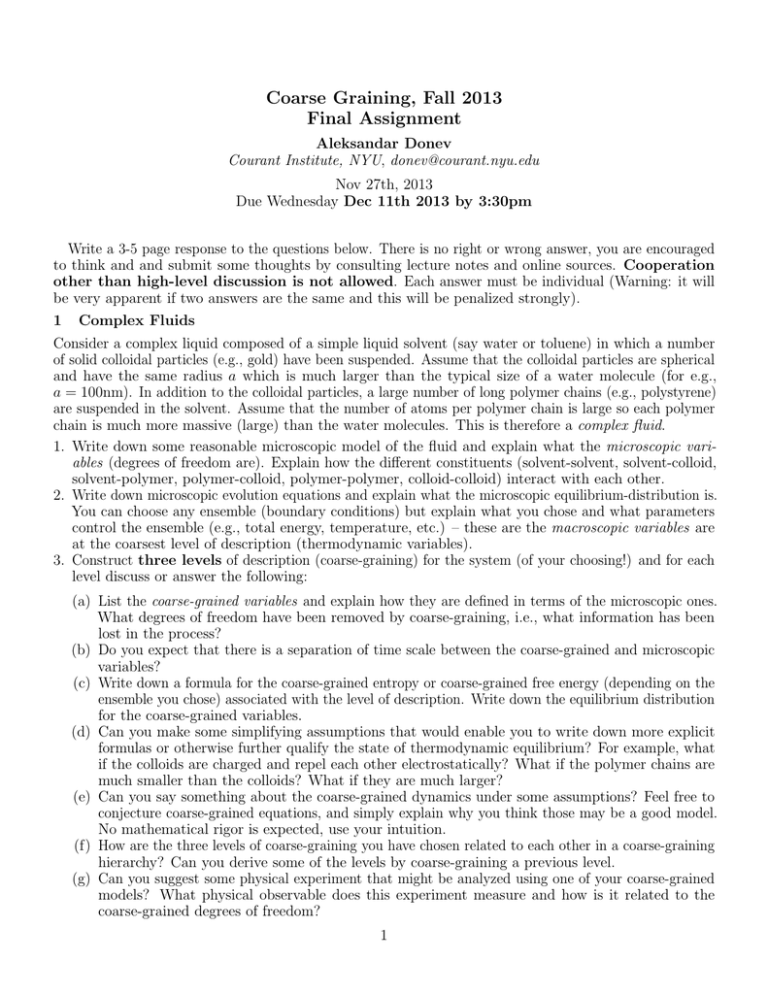
Coarse Graining, Fall 2013 Final Assignment Aleksandar Donev Courant Institute, NYU, donev@courant.nyu.edu Nov 27th, 2013 Due Wednesday Dec 11th 2013 by 3:30pm Write a 3-5 page response to the questions below. There is no right or wrong answer, you are encouraged to think and and submit some thoughts by consulting lecture notes and online sources. Cooperation other than high-level discussion is not allowed. Each answer must be individual (Warning: it will be very apparent if two answers are the same and this will be penalized strongly). 1 Complex Fluids Consider a complex liquid composed of a simple liquid solvent (say water or toluene) in which a number of solid colloidal particles (e.g., gold) have been suspended. Assume that the colloidal particles are spherical and have the same radius a which is much larger than the typical size of a water molecule (for e.g., a = 100nm). In addition to the colloidal particles, a large number of long polymer chains (e.g., polystyrene) are suspended in the solvent. Assume that the number of atoms per polymer chain is large so each polymer chain is much more massive (large) than the water molecules. This is therefore a complex fluid. 1. Write down some reasonable microscopic model of the fluid and explain what the microscopic variables (degrees of freedom are). Explain how the different constituents (solvent-solvent, solvent-colloid, solvent-polymer, polymer-colloid, polymer-polymer, colloid-colloid) interact with each other. 2. Write down microscopic evolution equations and explain what the microscopic equilibrium-distribution is. You can choose any ensemble (boundary conditions) but explain what you chose and what parameters control the ensemble (e.g., total energy, temperature, etc.) – these are the macroscopic variables are at the coarsest level of description (thermodynamic variables). 3. Construct three levels of description (coarse-graining) for the system (of your choosing!) and for each level discuss or answer the following: (a) List the coarse-grained variables and explain how they are defined in terms of the microscopic ones. What degrees of freedom have been removed by coarse-graining, i.e., what information has been lost in the process? (b) Do you expect that there is a separation of time scale between the coarse-grained and microscopic variables? (c) Write down a formula for the coarse-grained entropy or coarse-grained free energy (depending on the ensemble you chose) associated with the level of description. Write down the equilibrium distribution for the coarse-grained variables. (d) Can you make some simplifying assumptions that would enable you to write down more explicit formulas or otherwise further qualify the state of thermodynamic equilibrium? For example, what if the colloids are charged and repel each other electrostatically? What if the polymer chains are much smaller than the colloids? What if they are much larger? (e) Can you say something about the coarse-grained dynamics under some assumptions? Feel free to conjecture coarse-grained equations, and simply explain why you think those may be a good model. No mathematical rigor is expected, use your intuition. (f) How are the three levels of coarse-graining you have chosen related to each other in a coarse-graining hierarchy? Can you derive some of the levels by coarse-graining a previous level. (g) Can you suggest some physical experiment that might be analyzed using one of your coarse-grained models? What physical observable does this experiment measure and how is it related to the coarse-grained degrees of freedom? 1
